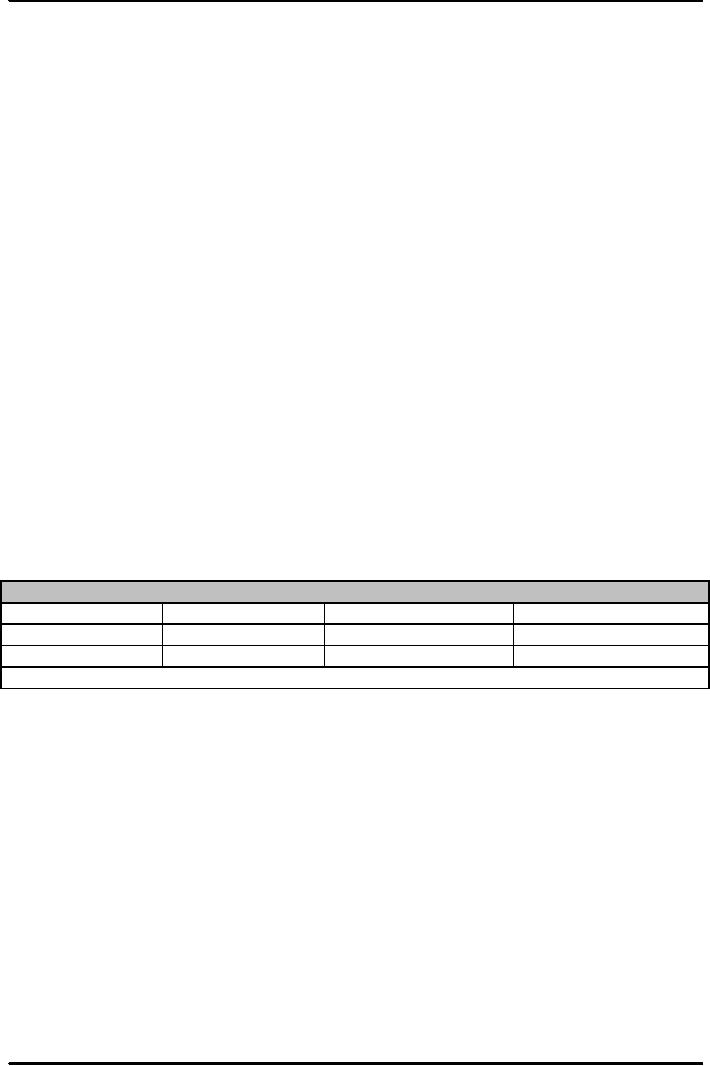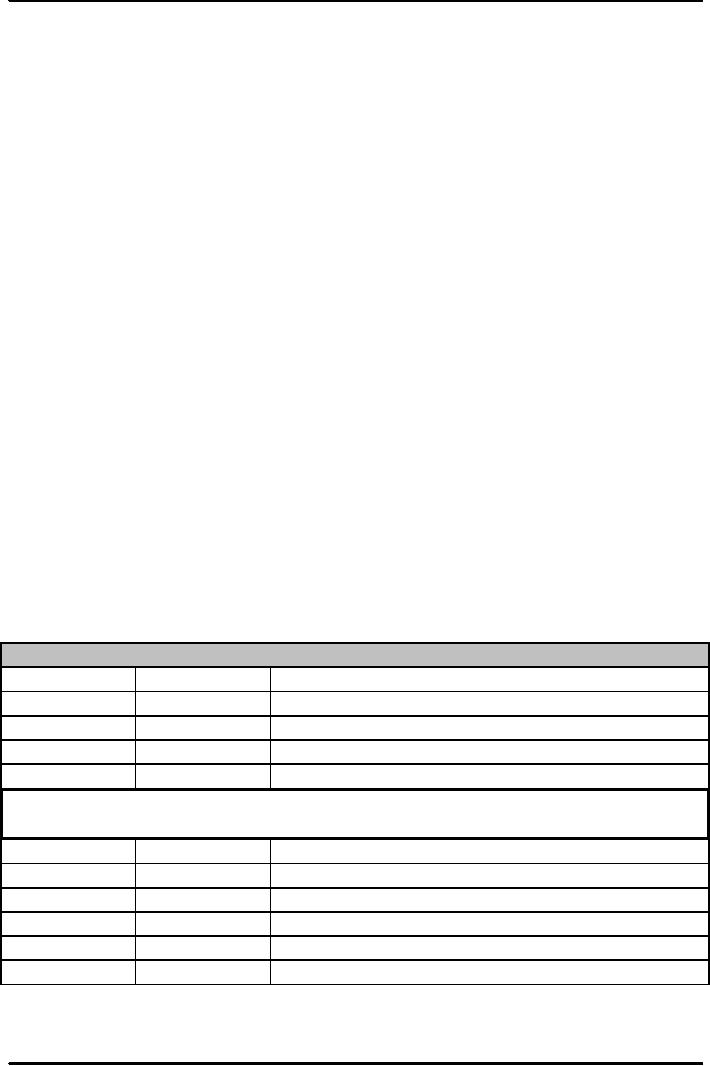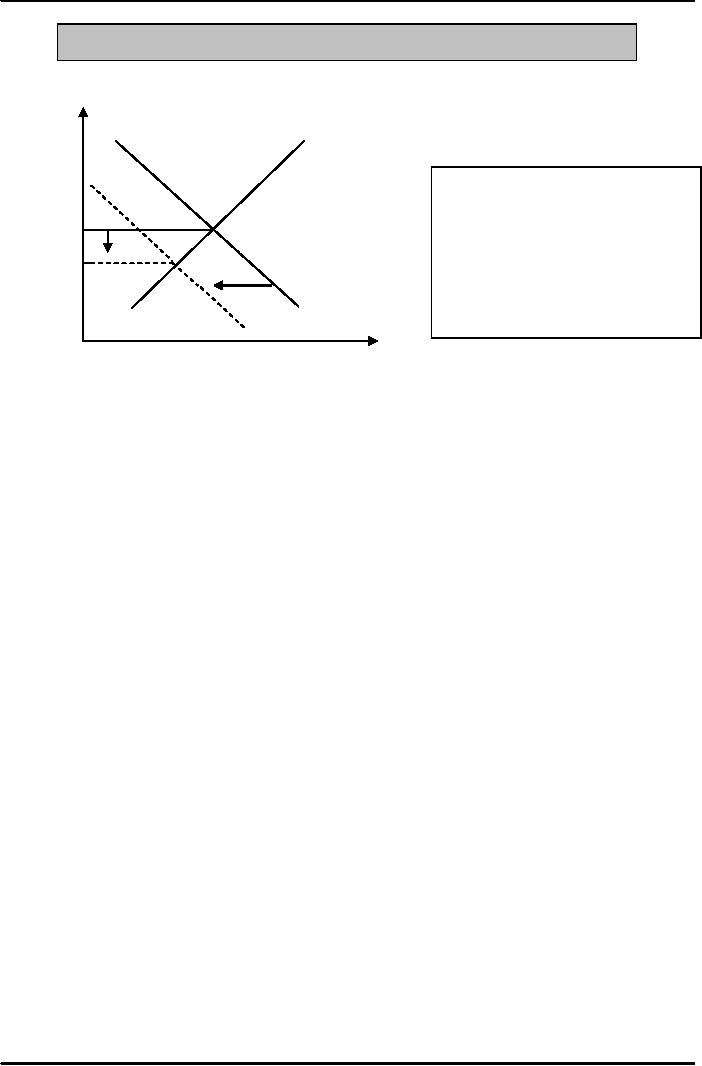 |
BONDS & SOURCES OF BOND RISK:Inflation Risk, Bond Ratings |
| << SHIFTS IN EQUILIBRIUM IN THE BOND MARKET & RISK |
| TAX EFFECT & TERM STRUCTURE OF INTEREST RATE:Expectations Hypothesis >> |

Money
& Banking MGT411
VU
Lesson
16
BONDS
& SOURCES OF BOND
RISK
Bonds and
Risk
Default
Risk
Inflation
Risk
Interest
Rate Risk
Bond
Ratings
Bond
Ratings and Risk
Tax
Effect
Bonds
and Risk
Sources
of Bond Risk
Default
Risk
Inflation
Risk
Interest-Rate
Risk
Default
Risk
There
is no guarantee that a bond
issuer will make the promised
payments
Investors
who are risk averse
require some compensation for
bearing risk; the more risk,
the
more
compensation they demand
The
higher the default risk the
higher the probability that
bondholders will not receive
the
promised
payments and thus, the higher the
yield
Suppose
risk-free rate is 5%
ZEDEX
Corp. issues one-year bond
at 5%
Price
without risk = ($100 +
$5)/1.05 = $100
Suppose
there is 10% probability that
ZEDEX Corp. goes bankrupt,
get nothing
Two
possible payoffs: $105 and $0
Table:
Expected Value of ZEDEX Bond
Payment
Possibilities
Payoff
Probability
Payoff
� Probabilities
Full
Payment
$105
0.90
$94.50
default
$0
0.10
$0
Expected
Value= Sum of Payoffs times Probabilities
= $94.50
Expected
PV of ZEDEX bond payment =
$94.5/1.05 = $90
If
the promised payment is $105, YTM will be
$105/90 1 = 0.1667 or
16.67%
Default
risk premium = 16.67% - 5% =
11.67%
Inflation
Risk
Bonds
promise to make fixed-dollar payments, and
bondholders are concerned
about the
purchasing
power of those
payments
The
nominal interest rate will be equal to
the real interest rate plus the expected
inflation rate
plus
the compensation for inflation
risk
The
greater the inflation risk, the larger
will be the compensation for it
Assuming
real interest rate is 3% with the
following information
51

Money
& Banking MGT411
VU
Probabilities
Inflation
Case
I
Case
II
Case
III
1%
0.50
0.25
0.10
2%
-
0.50
0.80
3%
0.50
0.25
0.10
Expected
Inflation
2%
2%
2%
Standard
Deviation
1.0%
0.71%
0.45%
Nominal
rate = 3% real rate + 2% expected inflation +
compensation for inflation
risk
Interest-Rate
Risk
Interest-rate
risk arises from the fact
that investors don't know the
holding period yield of
a
long-term
bond.
If
you have a short investment horizon and
buy a long-term bond you
will have to sell it
before
it
matures, and so you must
worry about what happens if
interest rates change
Because
the price of long-term bonds
can change dramatically,
this can be an important
source
of
risk
Bond
Ratings
The
risk of default (i.e., that
a bond issuer will fail to
make a bond's promised payments) is one
of
the most important risks a bondholder
faces, and it varies among
issuers.
Credit
rating agencies have come
into existence to assess the default
risk of different
issuers
The
bond ratings are an
assessment of the creditworthiness of the corporate
issuer.
The
definitions of creditworthiness used by
the rating agencies are
based on how likely
the
issuer
firm is to default and the protection
creditors have in the event of a
default.
These
ratings are concerned only
with the possibility of the default.
Since they do not
address
the
issue of interest rate risk, the price of
a highly rated bond may be
quite volatile.
Long
Term Ratings by PACRA
Investment
Grades:
AAA:
Highest
credit quality. `AAA' ratings denote the
lowest expectation of credit
risk.
AA:
Very
high credit quality. `AA'
ratings denote a very low
expectation of credit
risk.
A:
High
credit quality. `A' ratings denote a
low expectation of credit
risk.
BBB:
Good
credit quality. `BBB'
ratings indicate that there is
currently a low expectation
of
credit
risk.
Speculative
Grades:
BB:
Speculative.
`BB'
ratings
indicate that there is a possibility of
credit risk
developing,
B:
Highly
speculative. `B' ratings
indicate that significant
credit risk is present, but
a limited
margin
of safety remains.
CCC,
CC, C: High
default risk. Default is a
real possibility.
52

Money
& Banking MGT411
VU
Short
Term Ratings by PACRA
A1+:
highest
capacity for timely
repayment
A1:
Strong capacity for timely
repayment
A2:
satisfactory capacity for timely
repayment may be susceptible to adverse
economic
conditions
A3:
an adequate capacity for
timely repayment. More susceptible to
adverse economic
condition
B:
timely repayment is susceptible to adverse
changes in business, economic, or
financial conditions
C:
an inadequate capacity to ensure timely
repayment
D:
high risk of default or
which are currently in
default
Bond
Ratings and Risk
Bond
Ratings
Moody's
and Standard & Poor's
Ratings
Groups
Investment
Grade
Non-Investment
Speculative Grade
Highly
Speculative
Commercial
Paper Ratings
Moody's
and Standard & Poor's
Rating
Groups
Investment
Speculative
Default
Bond
(Credit) Ratings
S&P
Moody's
What
it means
AAA
Aaa
Highest
quality and credit
worthiness
AA
Aa
Slightly
less likely to pay principal
+ interest
A
A
Strong
capacity to make payments, upper
medium grades
BBB
Baa
Medium
grade, adequate capacity to make
payments
BB
Ba
Moderate
ability to pay, speculative element,
vulnerable
B
B
Not
desirable investment, long term payment
doubtful
CCC
Caa
Poor
standing, known vulnerabilities,
doubtful payment
CC
Ca
Highly
speculative, high default
likelihood, known
reasons
C
C
Lowest
rated class, most unlikely to
reach investment
grades
D
Already
defaulted on payments
NR
No
public rating has been
requested
+
Or -
&1,
2, 3
Within-class
refinement of AA to CCC ratings
The
lower a bond's rating the
lower its price and the
higher its yield.
53

Money
& Banking MGT411
VU
Figure:
The effect of an increase in
risk on equilibrium in the bond
market
S
Increased
risk reduces the demand
for
the
bond at every price,
shifting the
demand
curve to the left from Do
to
Po
Eo
D1.
The result is a decline in
the
equilibrium
price and quantity in the
P1
E1
market.
Importantly, the price
falls
from
Po to P1, so the yield on the
bond
must rise.
Do
D1
Quantity
of Bonds
Increased
Risk reduces Bond
Demand
The
resulting shift to the left
causes a decline in equilibrium
price and an increase in the
bond
yield.
A
bond yield can be thought of
as the sum of two parts:
The
yield on the Treasury bond
(called "benchmark bonds"
because they are close to
being risk-
free)
and
A
risk spread or default risk
premium
If
the bond ratings properly
reflect the probability of default,
then lower the rating of the
issuer,
the
higher the default risk
premium
So
we may conclude that when
Treasury bond yields change,
all other yields will
change in the
same
direction
54
Table of Contents:
- TEXT AND REFERENCE MATERIAL & FIVE PARTS OF THE FINANCIAL SYSTEM
- FIVE CORE PRINCIPLES OF MONEY AND BANKING:Time has Value
- MONEY & THE PAYMENT SYSTEM:Distinctions among Money, Wealth, and Income
- OTHER FORMS OF PAYMENTS:Electronic Funds Transfer, E-money
- FINANCIAL INTERMEDIARIES:Indirect Finance, Financial and Economic Development
- FINANCIAL INSTRUMENTS & FINANCIAL MARKETS:Primarily Stores of Value
- FINANCIAL INSTITUTIONS:The structure of the financial industry
- TIME VALUE OF MONEY:Future Value, Present Value
- APPLICATION OF PRESENT VALUE CONCEPTS:Compound Annual Rates
- BOND PRICING & RISK:Valuing the Principal Payment, Risk
- MEASURING RISK:Variance, Standard Deviation, Value at Risk, Risk Aversion
- EVALUATING RISK:Deciding if a risk is worth taking, Sources of Risk
- BONDS & BONDS PRICING:Zero-Coupon Bonds, Fixed Payment Loans
- YIELD TO MATURIRY:Current Yield, Holding Period Returns
- SHIFTS IN EQUILIBRIUM IN THE BOND MARKET & RISK
- BONDS & SOURCES OF BOND RISK:Inflation Risk, Bond Ratings
- TAX EFFECT & TERM STRUCTURE OF INTEREST RATE:Expectations Hypothesis
- THE LIQUIDITY PREMIUM THEORY:Essential Characteristics of Common Stock
- VALUING STOCKS:Fundamental Value and the Dividend-Discount Model
- RISK AND VALUE OF STOCKS:The Theory of Efficient Markets
- ROLE OF FINANCIAL INTERMEDIARIES:Pooling Savings
- ROLE OF FINANCIAL INTERMEDIARIES (CONTINUED):Providing Liquidity
- BANKING:The Balance Sheet of Commercial Banks, Assets: Uses of Funds
- BALANCE SHEET OF COMMERCIAL BANKS:Bank Capital and Profitability
- BANK RISK:Liquidity Risk, Credit Risk, Interest-Rate Risk
- INTEREST RATE RISK:Trading Risk, Other Risks, The Globalization of Banking
- NON- DEPOSITORY INSTITUTIONS:Insurance Companies, Securities Firms
- SECURITIES FIRMS (Continued):Finance Companies, Banking Crisis
- THE GOVERNMENT SAFETY NET:Supervision and Examination
- THE GOVERNMENT'S BANK:The Bankers' Bank, Low, Stable Inflation
- LOW, STABLE INFLATION:High, Stable Real Growth
- MEETING THE CHALLENGE: CREATING A SUCCESSFUL CENTRAL BANK
- THE MONETARY BASE:Changing the Size and Composition of the Balance Sheet
- DEPOSIT CREATION IN A SINGLE BANK:Types of Reserves
- MONEY MULTIPLIER:The Quantity of Money (M) Depends on
- TARGET FEDERAL FUNDS RATE AND OPEN MARKET OPERATION
- WHY DO WE CARE ABOUT MONETARY AGGREGATES?The Facts about Velocity
- THE FACTS ABOUT VELOCITY:Money Growth + Velocity Growth = Inflation + Real Growth
- THE PORTFOLIO DEMAND FOR MONEY:Output and Inflation in the Long Run
- MONEY GROWTH, INFLATION, AND AGGREGATE DEMAND
- DERIVING THE MONETARY POLICY REACTION CURVE
- THE AGGREGATE DEMAND CURVE:Shifting the Aggregate Demand Curve
- THE AGGREGATE SUPPLY CURVE:Inflation Shocks
- EQUILIBRIUM AND THE DETERMINATION OF OUTPUT AND INFLATION
- SHIFTS IN POTENTIAL OUTPUT AND REAL BUSINESS CYCLE THEORY